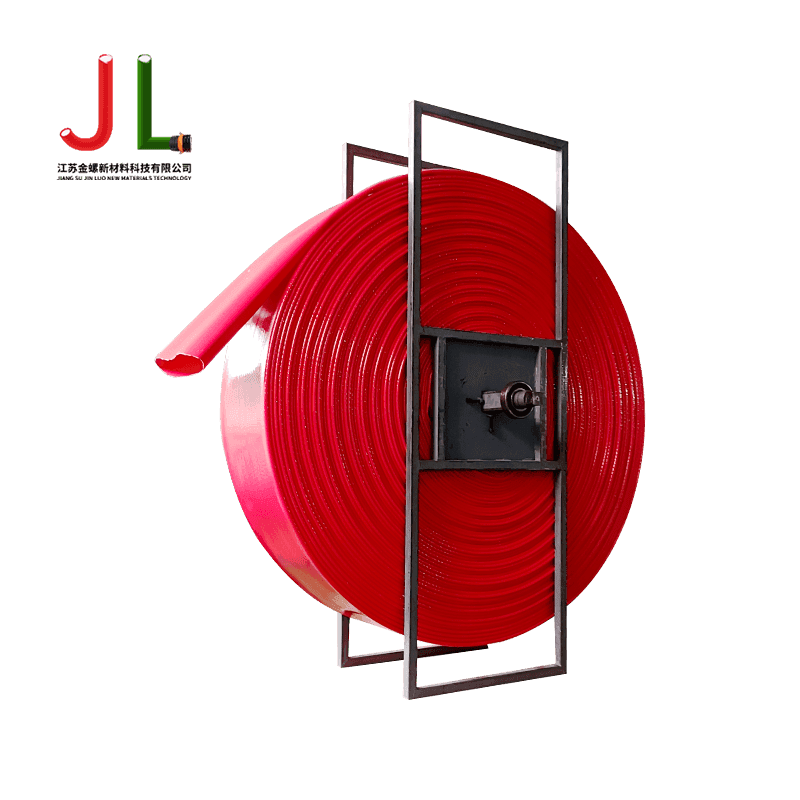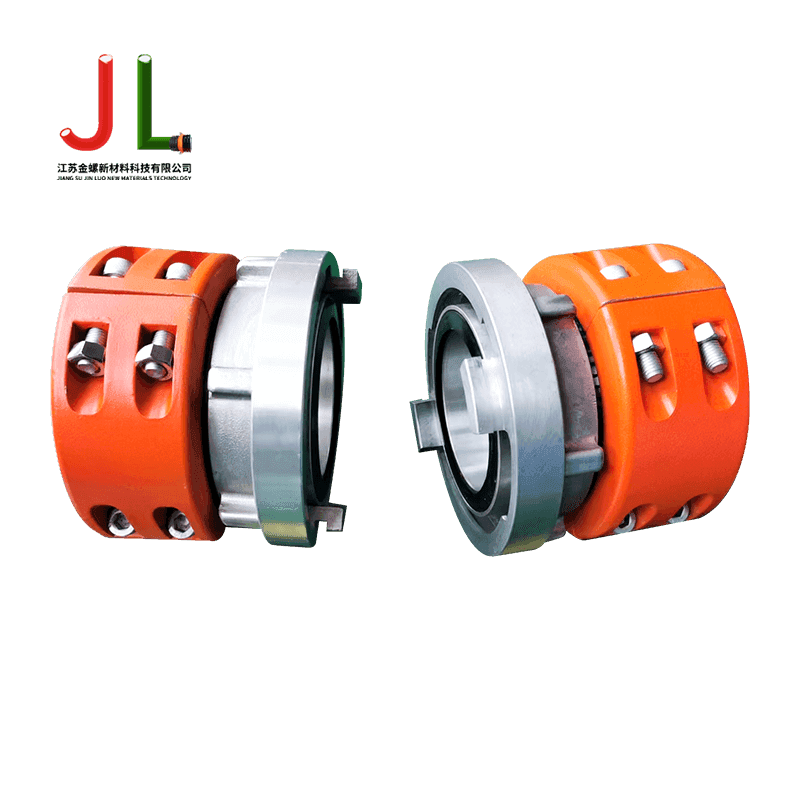How does LDHC Flange Large Diameter Hose Coupling Flange Type solve the problem of large-diameter hose leakage?
In modern industrial production, large-diameter hoses, as an important part of connecting various equipment, pipelines and systems, undertake the key task of conveying fluids and materials. Whether in petrochemical, papermaking, metallurgy, or municipal water supply and drainage systems, the performance of large-diameter hoses directly affects the stability and safety of the overall production line. Leakage, as one of the most common and difficult problems in hose connection, not only causes material waste and environmental pollution, but also seriously threatens the safety of operators, and may even cause equipment failure and production stagnation. In this context, LDHC Flange Large Diameter Hose Coupling Flange Type has become a key tool to solve the problem of large-diameter hose leakage with its unique design concept and advanced sealing technology.
1. The root cause of large-diameter hose leakage
1.1 Hose material and environmental adaptability limitations
Large-diameter hoses are usually used in high-flow, heavy-load conditions, and are often exposed to changing environmental conditions, such as high temperature, low temperature, highly corrosive media and mechanical shock. If the hose material cannot adapt to the harsh environment, it is prone to aging, cracking or deformation, resulting in poor sealing of the connection parts, thus causing leakage. In addition, the chemical compatibility of different media with the hose also affects the sealing performance. Some highly corrosive liquids may gradually destroy the inner layer and joints of the hose, increasing the risk of leakage.
1.2 Sealing defects in traditional connection methods
Traditional large-diameter hose connections mostly use simple threads, clamps or welding methods, which often make it difficult to achieve uniform force and difficult to ensure the sealing effect. Threaded connections are prone to seal failure due to looseness or vibration in high-pressure environments. Although welded connections are firm, they lack flexibility and are complex to maintain. Clamp connections have the problem of insufficient clamping force, and gaps are prone to occur in hose interfaces, which become a hidden danger of leakage.
1.3 Leakage hazards caused by working pressure and temperature fluctuations
Large-diameter hoses are often subjected to high working pressure in industrial systems, and as the system runs, pressure and temperature fluctuate frequently. This dynamic change places extremely high demands on the sealing system. If the connector cannot be adjusted in time to adapt to these changes, the sealing ring may be squeezed and deformed or fail, resulting in tiny cracks on the sealing surface, which in turn causes leakage.
1.4 Leakage risk caused by improper installation and maintenance
Irregular operations during the installation process, such as unclean flange surface, improper installation of seals, uneven tightening force, etc., may cause loose connections and form leakage points. At the same time, if there is a lack of regular maintenance during long-term operation, the sealing material will age or fatigue, and the fasteners will loosen, which will gradually increase the risk of leakage. Negligence in maintenance often makes it difficult to detect hidden dangers early, and eventually turns into serious leakage accidents.
2. Design advantages of LDHC Flange Large Diameter Hose Coupling Flange Type
2.1 Scientific optimization of structural design
This type of flange adopts an optimized structural design, fully considering the fit of the hose and flange to ensure that the contact surface is flat and the force is uniform. The specially designed flange profile can effectively avoid local stress concentration and reduce the risk of leakage from the root. At the same time, its large diameter design meets the use requirements of large flow and high pressure in industry, ensuring the stability and reliability of the connection.
2.2 High-performance sealing materials ensure reliable sealing
The sealing materials are made of high-temperature and corrosion-resistant synthetic rubber or polymer materials. These materials have excellent elasticity and wear resistance and can adapt to the erosion of different media and environments. The close contact between the sealing ring and the flange surface can effectively block fluid leakage and extend the service life.
2.3 Multi-point uniform compression technology improves the sealing effect
The flange connector is designed with multiple evenly distributed fastening points. With the help of uniform compression force, the compression between the sealing ring and the contact surface reaches the optimal state, avoiding poor sealing caused by uneven force. This multi-point compression method greatly reduces the probability of leakage and improves the overall safety of the system.
2.4 Modular design facilitates disassembly and maintenance
The modular design makes the flange connector easy to disassemble and replace quickly, saving maintenance time and labor costs. At the same time, the modular structure also improves the flexibility of the connection system. The connection length and configuration can be adjusted according to actual needs to achieve multi-scenario applicability.
3. How to prevent leakage with key technologies
3.1 Precisely matched sealing ring and flange surface
High-precision machining ensures that the flatness of the flange surface and the size of the sealing ring are precisely matched, avoiding tiny leakage channels caused by gaps. The contact surface between the sealing ring and the flange reaches the ideal sealing contact pressure, achieving complete isolation of liquid or gas.
3.2 Application of corrosion-resistant and wear-resistant materials
For different media, the connector uses special materials such as fluororubber, polytetrafluoroethylene (PTFE), etc. to ensure that the sealing performance is not affected in strong acid and alkali, high temperature or mechanical friction environments, extend the service life, and avoid leakage caused by material aging.
3.3 High adaptability to pressure fluctuations
The design fully considers the dynamic changes of pressure and temperature during the operation of the system. The seal has good elastic recovery ability, can maintain the integrity of the seal in high and low pressure cycles, and reduce the leakage risks caused by pressure fluctuations.
3.4 Anti-vibration and anti-torque design
The design of the flange structure and fasteners takes into account vibration and torque loads to avoid flange loosening or sealing ring displacement due to equipment operation vibration or pipeline torsion. Enhanced anti-vibration properties ensure stable operation of the system under complex working conditions.
4. Performance in practical applications
4.1 Sealing stability in industrial pipeline systems
In various large-scale industrial pipeline systems, this flange-type connector exhibits excellent sealing stability. Whether it is high-pressure steam transmission or liquid chemical transmission, it can effectively prevent leakage, ensure continuous operation of the system, and avoid shutdown and maintenance.
4.2 Efficient leakage protection in the chemical and petroleum fields
The chemical and petroleum industries have extremely high requirements for pipeline sealing. This connector uses its high-performance sealing materials and structural design to withstand highly corrosive media and severe pressure fluctuations, ensure safe production, and reduce environmental pollution risks.
4.3 Safety protection of municipal water supply and drainage systems
In municipal engineering, hose connections face water quality changes and frequent maintenance needs. This flange connector, with its modular structure and reliable sealing, ensures that the water supply and drainage systems are stable and leak-free, and guarantees public safety.
4.4 Durability performance in the field of shipbuilding and marine engineering
The salt spray, humidity and mechanical shock of the marine environment are extremely challenging. The connector adopts corrosion-resistant materials and shock-proof design to ensure that the hose connection can work stably for a long time in complex sea conditions, reducing the frequency and cost of maintenance.
5. Best practices for installation and maintenance
5.1 Correct installation process and precautions
During installation, the standard steps should be strictly followed: ensure that the flange surface is clean and free of impurities, the sealing ring is accurately placed, and the fasteners are evenly loaded in stages to avoid eccentric loading. At the same time, use appropriate tools to avoid over-tightening and damage to the seal.
5.2 Regular inspection of seals and replacement suggestions
Establish a regular inspection plan, focusing on seal wear, flange surface corrosion and fastener loosening. If abnormalities are found, seals or fasteners should be replaced in time to prevent small problems from evolving into serious leaks.
5.3 Early identification techniques for leakage hazards
Use visual inspection, leak detection instruments and pressure monitoring equipment to promptly detect signs of small leaks. Early warning systems can effectively avoid leakage accidents and ensure production safety.
5.4 Safety regulations in maintenance operations
During the maintenance process, the relevant pipeline pressure should be cut off, necessary safety protection equipment should be worn, and operating procedures should be followed to prevent accidental injuries. After the maintenance is completed, the sealing performance test should be carried out to ensure that it is restored to a good state.
Conclusion
LDHC Flange Large Diameter Hose Coupling Flange Type effectively solves the leakage problem in large-diameter hose connections with scientific design concepts and advanced sealing technology, and improves the safety and stability of industrial pipeline systems. Through reasonable installation and standardized maintenance, the connector can maintain excellent sealing performance under a variety of complex working conditions, ensuring production continuity and environmental safety. In the future, with the continuous development of technology, related products will become more intelligent and efficient, and continue to bring more reliable solutions to the industrial field.



 English
English عربى
عربى 中文
中文















